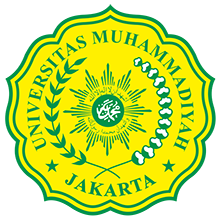Optimization of Manufacturing Company's Production Process Using Lean Six Sigma
Abstract
In the manufacturing industry, product quality is the main focus. Companies must ensure products meet quality standards. PT. Preshion Engineering Plastec Surabaya is a company that produces plastec supporting components. The object of this study is Yamaha emblem assy products. With Lean six sigma using DMAIC (Define, Measure, Analyze, Improve, Control) methodology to improve production processes. In addition, it improves the efficiency and effectiveness of the production process, improves product quality. The emblem assy product from CTQ shows that there are 4 defects that occur, namely outgoing rays, dirty, shin marks, and short mold. So that the DPMO (Defect Per Million Opportunies) value from January to March 2023 is 159784.715 with an average of 13315.39 and produces a sigma value of 45.0011 with an average of 3.75. Identification of the root causes of defects in Emblem assy products that are dominant with fishbone diagrams, namely dirty injection machines and material mixing machines, old machine age. It is hoped that further research can identify the factors that cause product defects with broader and more significant aspects to be used.
Keywords
Full Text:
PDFReferences
D. P. Andriyany, “Analisis Konsep Produktivitas dan Faktor-Faktor yang Mempengaruhi Produktivitas Kerja Karyawan (Studi Literatur),” STIE PGRI Dewantara Jombang, 2021.
M. Sinungan, Produktivitas: Apa dan Bagaimana. Jakarta: Bumi Aksara, 1987.
M. Y. Wibisono, “Pengaruh Keselamatan Kerja, Kesehatan Kerja dan Kesejahteraan terhadap Produktivitas Karyawan (Studi Kasus pada PT. Wahana Abadi Rayon Purbalingga),” Universitas Muhammadiyah Purwokerto, 2017.
E. Sutrisno, Manajemen Sumber Daya Manusia (Cetakan Ke-8). Jakarta: Kencana Prenada Media Group, 2016.
S. M. Hasibuan, “Pengaruh Kepemimpinan, Lingkungan Kerja dan Motivasi Kerja terhadap Kinerja,” Maneggio J. Ilm. Magister Manaj., vol. 1, no. 1, hal. 71–80, 2018, doi: https://doi.org/10.30596/maneggio.v1i1.2243.
G. K. Gupta, D. Agrawal, R. K. Singh, dan R. K. Arya, “Prevalence, Risk Factors and Socio Demographic Co-Relates of Adolescent Hypertension in District Ghaziabad,” Indian J. Community Heal., vol. 25, no. 3, hal. 293–298, 2013, [Daring]. Tersedia pada: http://www.iapsmupuk.org/journal/index.php/IJCH/article/view/331
V. Gaspersz, Manajemen Kualitas dalam Industri Jasa. Jakarta: Gramedia Pustaka Utama, 2002.
M. Kholil, J. Haekal, A. Suparno, D. Savira, dan T. Widodo, “Lean Six Sigma Integration to Reduce Waste in Tablet Coating Production with DMAIC and VSM Approach in Production Lines of Manufacturing Companies,” Int. J. Sci. Adv. ISSN 2708, vol. 7972, no. 2, hal. 5, 2021, doi: https://doi.org/10.51542/ijscia.v2i5.8.
S. Saryanto, H. H. Purba, dan A. Trimarjoko, “Improve Quality Remanufacturing Welding and Machining Process in Indonesia Using Six Sigma Methods,” J. Eur. Des Syst. Autom., vol. 53, no. 3, 2020, doi: https://doi.org/10.18280/jesa.530308.
M. Alefari, K. Salonitis, dan Y. Xu, “The Role of Leadership in Implementing Lean Manufacturing,” Procedia Cirp, vol. 63, hal. 756–761, 2017, doi: https://doi.org/10.1016/j.procir.2017.03.169.
A.-A. Dadashnejad dan C. Valmohammadi, “Investigating the Effect of Value Stream Mapping on Operational Losses: A Case Study,” J. Eng. Des. Technol., vol. 16, no. 3, hal. 478–500, 2018, doi: https://doi.org/10.1108/JEDT-11-2017-0123.
F. R. Jacobs dan R. Chase, Operations and Supply Chain Management (4th Edition). New York: McGraw-Hill Education, 2016.
H. Prastiyo dan F. A. Ekoanindiyo, “Pengendalian Kualitas Produk Teh Hijau Menggunakan Pendekatan Six Sigma,” Din. Tek. Ind., vol. 8, no. 2, 2014, [Daring]. Tersedia pada: https://www.unisbank.ac.id/ojs/index.php/ft1/article/view/3053
Y. Yuliana, Y. N. Nasution, dan W. Wasono, “Penggunaan Metode Kaizen pada Tahap Improve dalam Six Sigma,” Eksponensial, vol. 8, no. 1, hal. 81–86, 2017, [Daring]. Tersedia pada: http://jurnal.fmipa.unmul.ac.id/index.php/exponensial/article/view/80
N. T. Putri, B. Hidayat, D. Fatrias, dan A. S. Indrapriyatna, “Reducing Bag Defects Using Six Sigma Methodology: A Case Study in A Cement Industry,” in 2018 7th International Conference on Industrial Technology and Management (ICITM), IEEE, 2018, hal. 11–16. doi: https://doi.org/10.1109/ICITM.2018.8333911.
J. Heizer dan B. Render, Operations Management (7th Edition). New Jersey: Pearson Education, 2014.
B. Neyestani, “Seven Basic Tools of Quality Control: The Appropriate Quality Techniques for Solving Quality Problems in the Organizations,” Zenodo, 2017, doi: https://doi.org/10.5281/zenodo.400832.
P. Barosz, M. Dudek-Burlikowska, dan M. Roszak, “The Application of the FMEA Method in the Selected Production Process of a Company,” Prod. Eng. Arch., vol. 18, no. 18, hal. 35–41, 2018, doi: https://doi.org/10.30657/pea.2018.18.06.
J. F. W. Peeters, R. J. I. Basten, dan T. Tinga, “Improving Failure Analysis Efficiency by Combining FTA and FMEA in a Recursive Manner,” Reliab. Eng. Syst. Saf., vol. 172, hal. 36–44, 2018, doi: https://doi.org/10.1016/j.ress.2017.11.024.
S. Bastuti, “Analisis Kegagalan pada Seksi Marking untuk Menurunkan Klaim Internal dengan Mengaplikasikan Metode PDCA,” SINTEK J. J. Ilm. Tek. Mesin, vol. 11, no. 2, hal. 113–122, 2017, [Daring]. Tersedia pada: https://jurnal.umj.ac.id/index.php/sintek/article/view/2103
DOI: https://doi.org/10.24853/jurtek.16.2.213-224
Refbacks
- There are currently no refbacks.





















